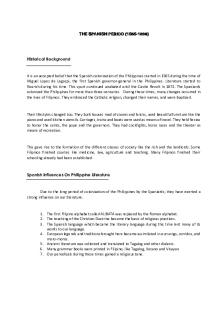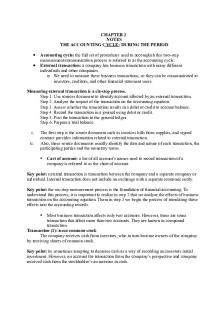Chapter 13 - Class lecture on costume during the Crinoline Period. Teacher\'s name: Mrs. Remy PDF

| Title | Chapter 13 - Class lecture on costume during the Crinoline Period. Teacher\'s name: Mrs. Remy |
|---|---|
| Course | History of Costume |
| Institution | Texas Woman's University |
| Pages | 3 |
| File Size | 56.3 KB |
| File Type | |
| Total Downloads | 101 |
| Total Views | 136 |
Summary
Class lecture on costume during the Crinoline Period. Teacher's name: Mrs. Remy Odukomaiya. ...
Description
Chapter 13: The Crinoline Period Worth: English Man who sewed for living, moved to Paris. Started sewing for wife with garments seamed and established house in Paris. Charles Worth. Napoleon III had him make garments for his wife. Worth and the Paris Couture Chambre Syndicale de la couture Parisienne. (Son’s started this and established rules for couture). England Victoria and Prince Albert: Increased imports and exports (Iron and steel) Prosperity Great Exhibition France Charles Worth: Louis Napoleon III was ruler at this time. United States Civil war: Rounding up about this time Morill Act: Government established land grants. (ex: Texas A&M, University of Tennessee. Women were able to go to school and take courses, most popular course was home economics). Women’s Right Anti-slavery The Gold Rush and Origins of Levi’s. The Civil War and Dress. Production of clothing: The Sewing Machine Early attempts at Dress reform: The “Bloomer” Costume: Full pants cinched in at the ankles (Named after Amelia Bloomer). Gymnastics, Tennis, Bathing (Bathing at beach) Women Costume: Garments Camisole or corset cover: (Stay is not popularly used anymore, corset takes over.) Both worn together as corset and corset cover. Decline of corset, corset cover becomes camisole. Engageantes: Under sleeve insert. Usually puffed or ribboned or bowed. Decorative application. Pagoda Sleeves: Fitted around shoulder and flared. (Short bell sleeve) Garibaldi: Blouse. Small flat collar w/ mid riff and full sleeves. Named after a military officer (Giuseppe Garibaldi). Princess Dress: one-piece garment w/princess seam lines. Fichus: Wide collar, usually worn over dresses. Extends and ties at back bodice. Cages: cage crinoline- Garments are much lighter because they don’t have much fabric but cage gives fullness (made w/ whale bone). Outdoor Garments Pardessus Paletot Pelisse-mantle Mantle
Shawl-mantle Talma-mantle Rotonde Burnous Zouave: Jacket that looks like a little Valero jacket. Hair and Headdress Same w/ center part Snood: Similar to a frete (netting). Footwear Basic slips made w/ kid (Looks velvety, “Ball shoes”). Accessories Fingerless and short gloves. Cosmetics Anything to colorful, to red was improper. The paler, the better. Men Costume Garments Sack Jacket: Loose fitting Jacket, very casual, not formal at all. Reefers or Pea Jackets: Double breasted jacket wide collar. Hip length, box fix. Braces: “Suspenders” men used to hold suspenders. Rule was not to wear a belt. Knickerbockers: Variation of trouser, short and puffed close to knee. Designed for more casual and athletic outings. Knickers: After a while Knickerbockers Outdoor Garment Chesterfield: Long coat w/ cape attachment at neckline. Frock Overcoat: Inverness cape: Raglan Cape: Sleeve is not set in at shoulder but is set at bodice, at neckline (Takes part of neckline and bodice). Hair Short cuts Side burns: “side whiskers” Beards and mustaches (sometimes) during later part of period most were clean shaved. Wide awake: Low rounded crown w/ small brim Stetson hat: (look like fedora hats) Footwear: Spats: (Shin guards) Jewelry Watches Gloves Walking stick Glasses Chains Children Wear
Same 6 and 5 and under still wore skirts. 6-10 years of age: garments were similar to women’s garment. 16 yr. old would wear similar garment as women but 2-3in shorter than regular....
Similar Free PDFs

Philit during the spanish period
- 6 Pages

Chapter 13 - Lecture notes 13
- 4 Pages

Chapter 13 - Lecture notes 13
- 14 Pages

Chapter 13 - Lecture notes 13
- 6 Pages
Popular Institutions
- Tinajero National High School - Annex
- Politeknik Caltex Riau
- Yokohama City University
- SGT University
- University of Al-Qadisiyah
- Divine Word College of Vigan
- Techniek College Rotterdam
- Universidade de Santiago
- Universiti Teknologi MARA Cawangan Johor Kampus Pasir Gudang
- Poltekkes Kemenkes Yogyakarta
- Baguio City National High School
- Colegio san marcos
- preparatoria uno
- Centro de Bachillerato Tecnológico Industrial y de Servicios No. 107
- Dalian Maritime University
- Quang Trung Secondary School
- Colegio Tecnológico en Informática
- Corporación Regional de Educación Superior
- Grupo CEDVA
- Dar Al Uloom University
- Centro de Estudios Preuniversitarios de la Universidad Nacional de Ingeniería
- 上智大学
- Aakash International School, Nuna Majara
- San Felipe Neri Catholic School
- Kang Chiao International School - New Taipei City
- Misamis Occidental National High School
- Institución Educativa Escuela Normal Juan Ladrilleros
- Kolehiyo ng Pantukan
- Batanes State College
- Instituto Continental
- Sekolah Menengah Kejuruan Kesehatan Kaltara (Tarakan)
- Colegio de La Inmaculada Concepcion - Cebu











